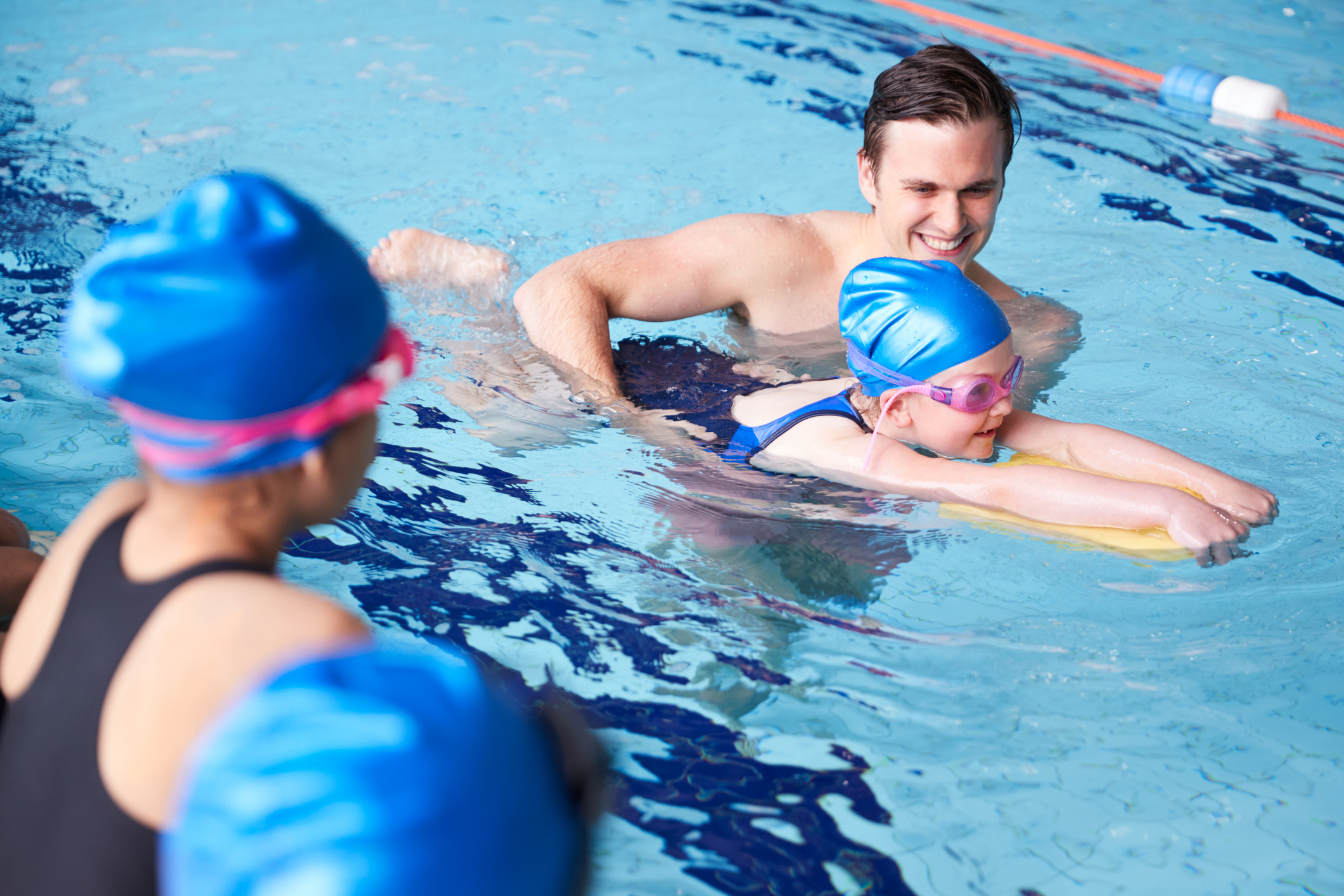
It’s Springtime! Which means it’s time for fun visits to the beach, afternoons at family pools, and moments by the lakes on camping grounds. Among these occasions lies a sobering reality – drowning is the leading cause of accidental death in Florida for children under the age of 5, with an average age of victims being just 18 months. This statistic is particularly heart-wrenching because these tragedies can be prevented.
It’s important to recognize that even after children have learned to swim, a false sense of security must not replace supervision around the water. Everyone, even adults, should be supervised when swimming. No one, regardless of their swimming ability, is immune to drowning.
Introducing Babies to Water
- For Newborns to 6 Months: Daily bathing is beneficial. If using an adult tub, consider getting in with your baby. Support your baby to float on their back by holding the back of their head with one hand and gently tilting their chin up with the other. When rinsing their head and hair, let the water flow naturally and use your hand to gently clear water from their face. This experience mimics the aquatic environment of the womb, making it comforting for babies. Without access to an adult tub, bathing under a gentle shower allows for a similar introduction to water. This approach helps babies to relax, enjoy their bath time, and strengthens bonding with their parents. Plus, this creates a solid base for swim lessons.
- For Babies Older Than 6 Months: In places like Florida, numerous programs offer infant swim lessons focused on survival skills, such as teaching babies how to roll over and float independently if they fall into the water. Enroll your child in these life-saving swim lessons as early as possible. As your child grows, you can gradually teach them more complex swimming techniques. For those concerned about outdoor conditions, like summer rains or cold winter waters, many facilities offer lessons indoors.
This approach not only helps alleviate parents’ fears by demonstrating safe and enjoyable water exposure, but it also emphasizes the importance of early water familiarity. By fostering a positive association with water from an early age, parents can significantly contribute to their child’s safety and enjoyment of swimming and water activities in the future.
Prevention Strategies
Effective drowning prevention strategies involve a multi-faceted approach including education, supervision, and safety precautions:
Education and Awareness: Knowledge is the first line of defense. Programs aimed at educating the public about the dangers of drowning, the importance of supervision, and how to recognize and respond to emergencies are critical. This includes understanding the signs of someone struggling in water and knowing CPR. Ensuring that individuals, especially children, have basic swimming skills is another key preventive measure. Local community centers, YMCAs, and schools often offer swimming lessons that cover not only swimming techniques but also safety practices, such as floating and treading water.
Making Your Pool at Home Kid-Safe: Ensuring that your pool is safe for children at your home is paramount to prevent accidents and ensure a fun and secure environment for family swimming activities.
- Install a fence with self-closing or self-latching gates around the pool can prevent children from accessing the pool area unsupervised. The fence should be at least 4 feet high and have no gaps wide enough for children to squeeze through.
- A safety pool cover can provide an additional layer of protection when the pool is not in use. Make sure the cover fits securely over the entire pool and is sturdy enough to withstand the weight of a child, should they accidentally step on it.
- Equip your pool area with life-saving tools such as life rings, reaching poles, and a first-aid kit. Ensure everyone in the household knows how to use these tools and is familiar with basic first-aid and CPR.
By implementing these safety measures, you can significantly reduce the risk of drowning and create a safer, more enjoyable swimming environment for children. Remember, vigilance and preparedness are key to preventing accidents and ensuring a fun and secure pool experience for everyone. If you have questions regarding how to implement effective drowning prevention measures or need personalized advice based on your child’s swimming abilities and health conditions, consult with your TopLine MD Alliance affiliated Pediatrician for expert guidance and recommendations.

Dr. Mirella Suarez-Troccoli is a proud member of the TopLine MD Alliance practicing Pediatric Care in Broward County.
The TopLine MD Alliance is an association of independent physicians and medical practice groups who are committed to providing a higher standard of healthcare services. The members of the TopLine MD Alliance have no legal or financial relationship with one another. The TopLine MD Alliance brand has no formal corporate, financial or legal ties to any of the affiliated physicians or practice groups.



